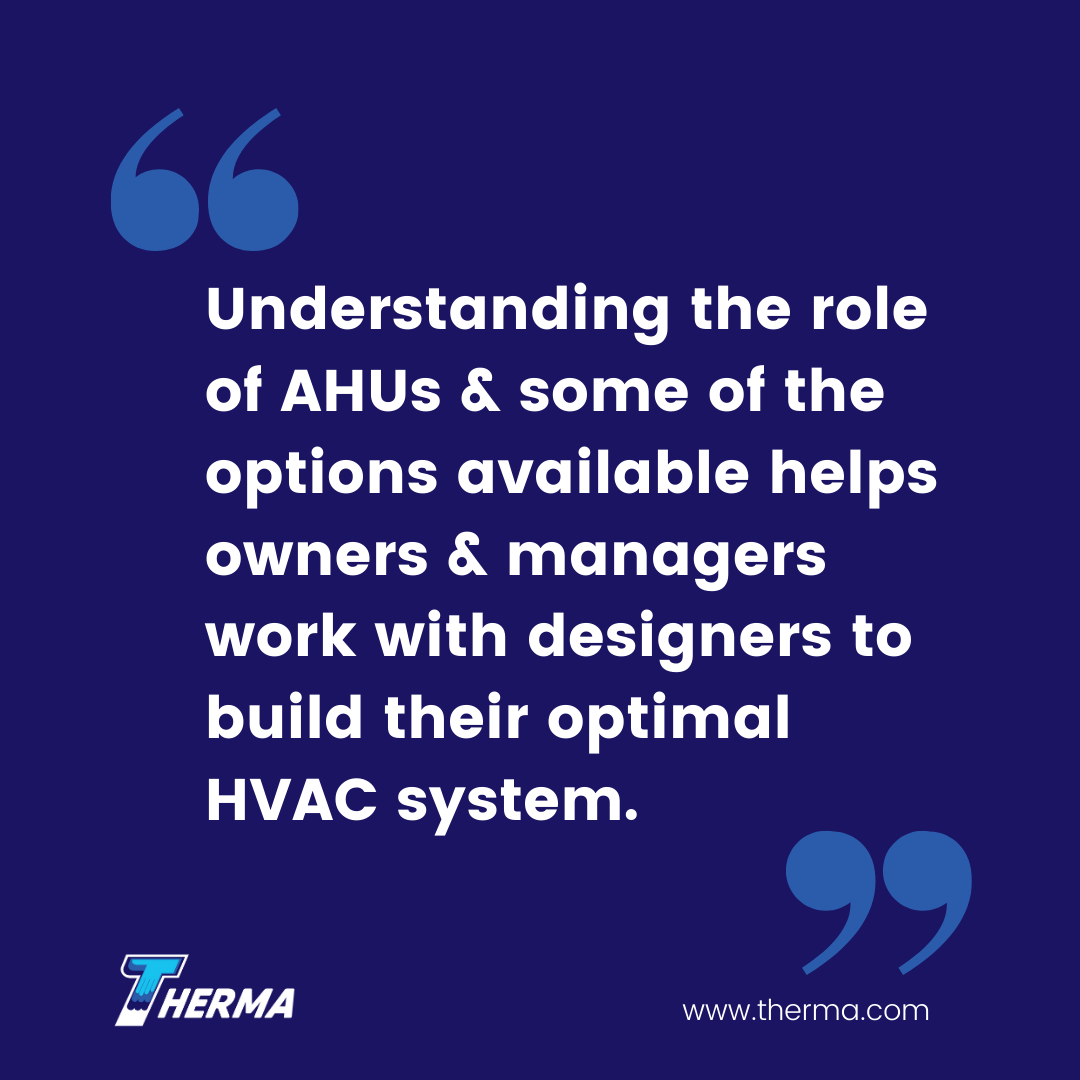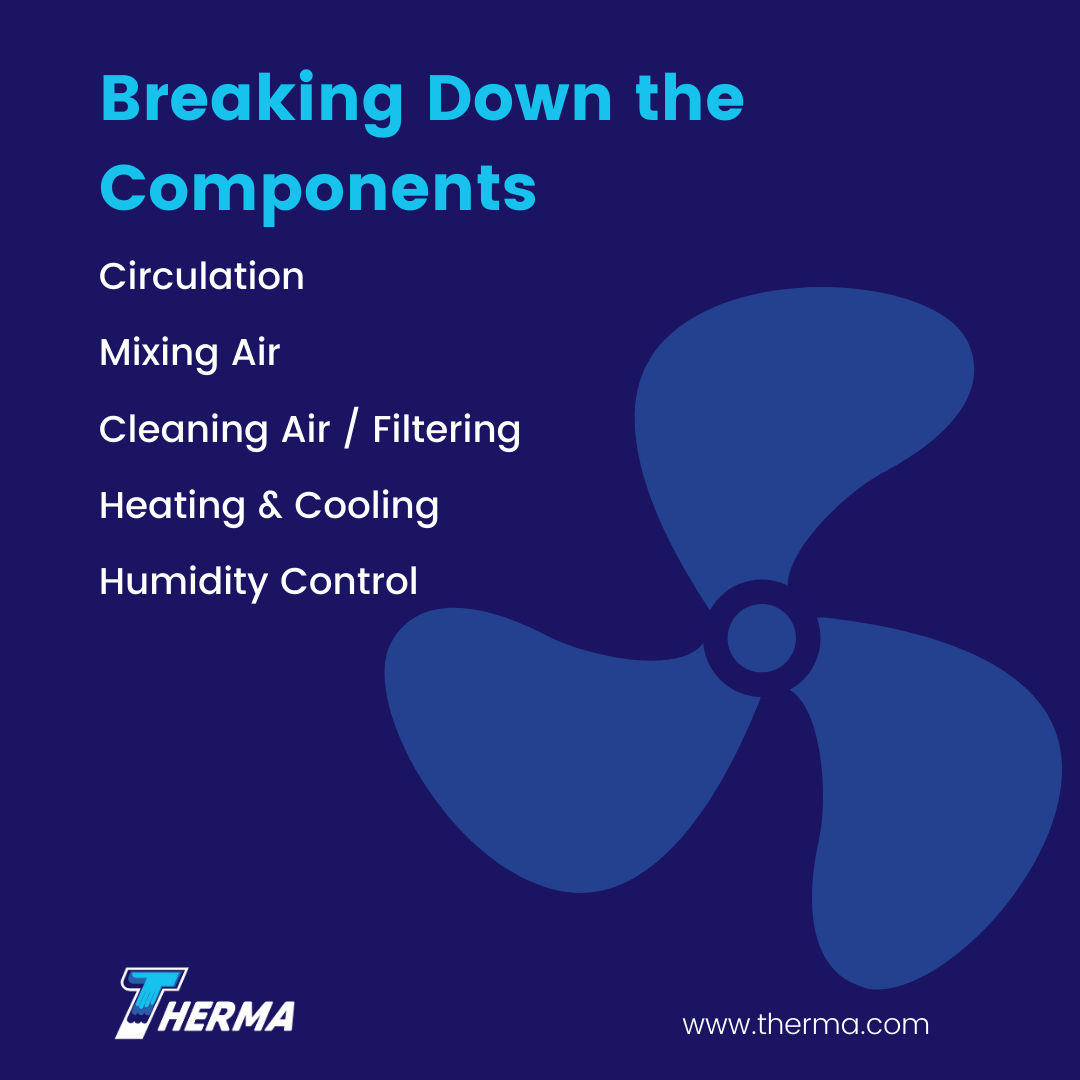Air handling units (AHU) do more than push air around. They include features that manage indoor air quality (IAQ) and allow for comfortable indoor temperatures. Understanding the role of AHUs and some of the options available helps owners and managers work with designers to build their optimal HVAC system.
What Is an AHU?
HVAC systems include at least two loops: the air that is recirculated, and the thermal fluid used to heat or cool the air. AHUs move air so that it can interact with the HVAC system’s thermal transfer fluid in a controlled manner. Some units also clean the air, mix fresh air with the return air, and adjust humidity to meet supply setpoints.
Breaking Down the Components
The most basic AHU, the fan coil unit, has a filter, heating coil and fan. Larger customizable units often include separate modules, called splits, that are assembled on site. Splits can include fans, filters, dampers, heating and cooling elements, and mixers. Components are included based on desired function.
- Circulation
- All AHUs include fans. The fans create airflow through the occupancy space and carry air passed heating and cooling elements.
- Mixing air
- Indoor air quality (IAQ) requires the introduction of fresh outdoor air and the removal of stale air. Some AHUs include outdoor air intakes, and vent stale air outside of the building envelope. Dampers and plenums mix fresher air with some of the return air, reducing the amount of air to be conditioned.
- Cleaning air (filtering)
- Removing dust, mold and contaminants is important for multiple reasons. Clean air is part of the IAQ standards. It also helps maintain HVAC efficiency by keeping coils and equipment clean.
- Heating and cooling
- Before the air makes it to the occupants, it must be heated or cooled to the desired temperature. Heat transfers between the air and the thermal transfer fluid—steam, water, refrigerant, etc.—as the air passes the heating or cooling equipment.
- Humidity control
- Adjustments to humidity may be necessary, especially when bringing in humid outside air or recirculating heated air in the winter. Different methods are available depending on the specifics of the building’s requirements. In some cases, the heating and cooling equipment in the AHU can control the humidity.
The order in which the splits connect is determined by the AHU’s features and the resulting air quality changes. For instance, if cooling the air to remove humidity as condensation leaves the air too cool, a heating element would need to be downstream.
Fan placement is another example in which the order of equipment is important. Fans either pull or push air through heating and cooling elements, depending on their position within the AHU. Units that pull air through are draw-through units. Blow-through units push air passed the elements. This distinction is important, because fans produce heat. Drawing air through a system carries the fan’s heat downstream.
Types of AHUs
The complexity of a building’s HVAC system may require different types of AHUs. Common pre-packaged setups include terminal units and rooftop units. Terminal units, also called small fan coil units, recirculate air within portions of the building. However, they do not bring in fresh air. Rooftop units (RTUs) are large self-contained units that include equipment for heating and cooling.
AHUs can be variable air volume (VAV) or constant air volume (CAV). They types of units differ in how they maintain temperature in a space. VAV units vary the airflow while keeping the temperature steady. CAV units vary the temperature while holding the airflow at a steady rate.
Makeup air units (MAU) or outside air units (OAU) are AHUs that only bring in outside air. They include components to condition the outside air for use within the building, but do not mix the air with the return air.
Well-chosen or customized AHUs are critical for an efficient HVAC system. Balancing options with costs involves careful consideration and planning.









